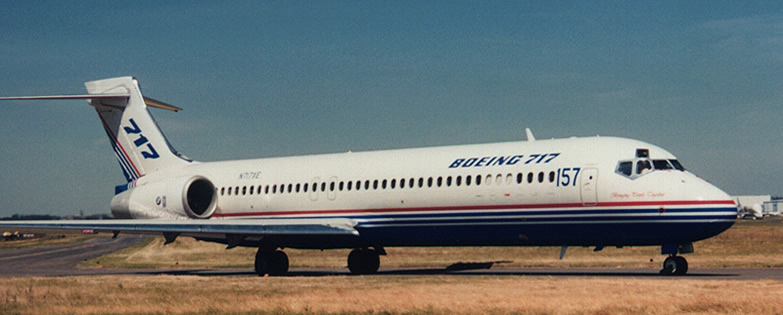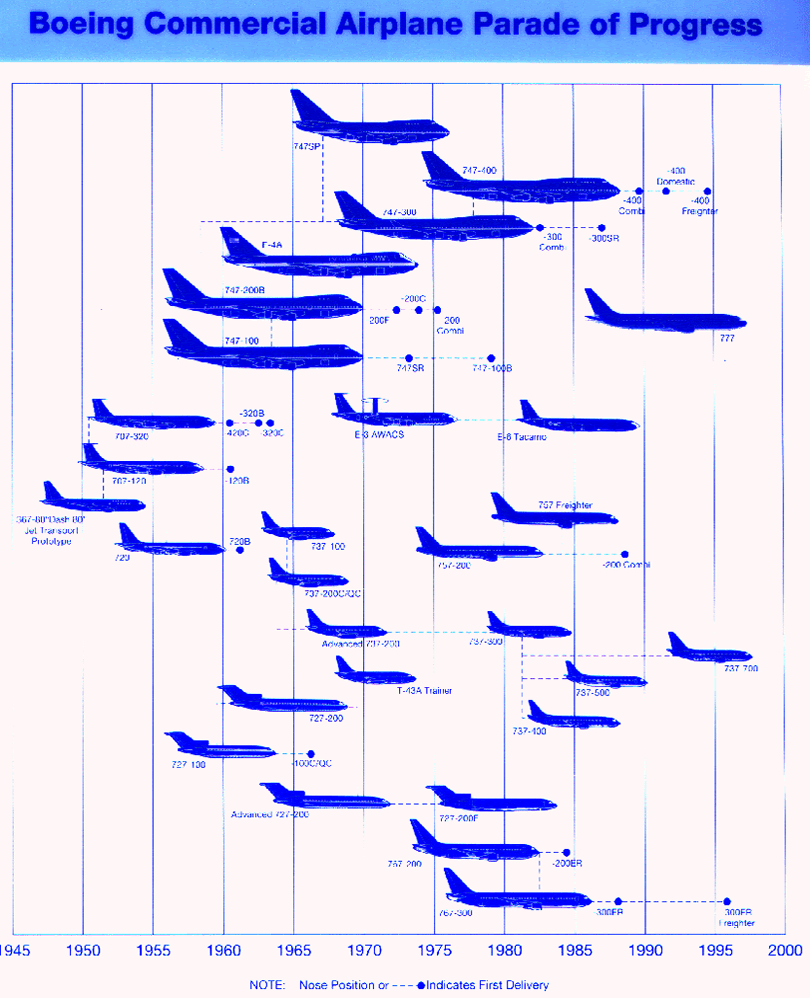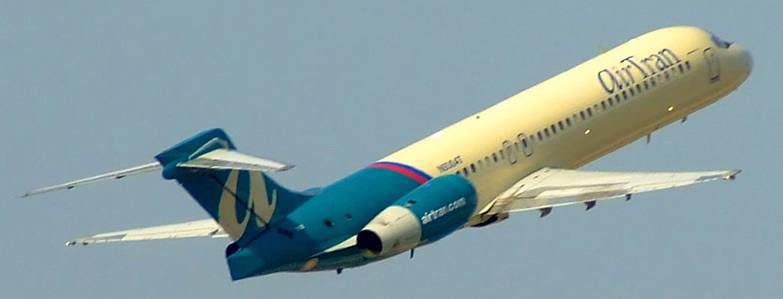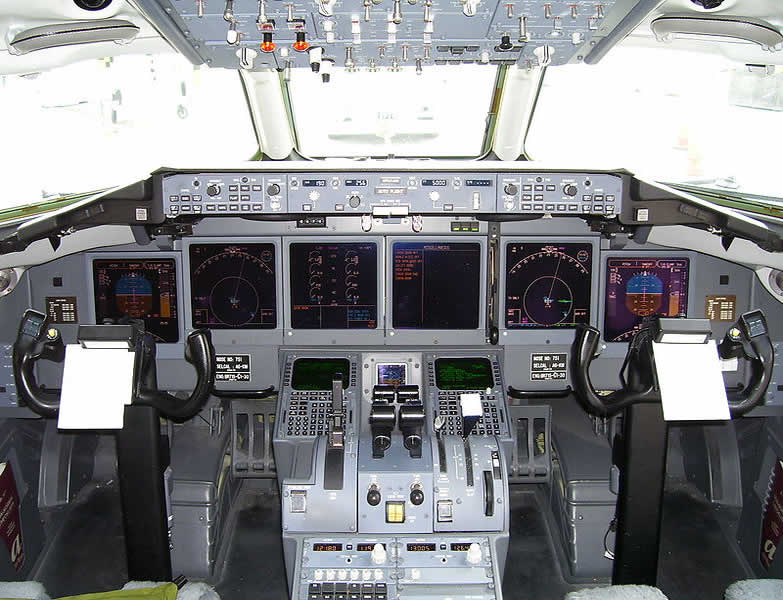BOEING 717 AIRCRAFT HISTORY, FACTS AND PICTURES
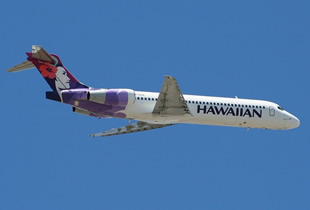 |
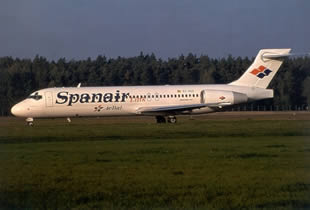 |
The Boeing 717 is a twin-engine, single-aisle jet airliner, developed for the 100-seat market. The airliner was designed and marketed by McDonnell Douglas as the MD-95, a third-generation derivative of the DC-9.The first order was placed in October 1995; however, McDonnell Douglas and Boeing merged in 1997 prior to production. The first planes entered service in 1999 as the Boeing 717. Production ceased in May 2006 after 156 units were produced.
Development Background The McDonnell Douglas MD-80 series was introduced into airline service in 1980. The design was second generation of the DC-9. It was a lengthened DC-9-50 with a higher maximum take-off weight (MTOW) and higher fuel capacity, as well as next-generation Pratt and Whitney JT8D-200 series engines. Nearly 1,200 MD-80s were delivered from 1980 to 1999. The MD-90 was developed from the MD-80 series. It was launched in 1989 and first flew in 1993. The MD-90 was longer, and featured a glass cockpit and more powerful, quieter, fuel efficient V2525-D5 engines, with the option of upgrading that to a V2528 engine. However, the MD-90 was not considered a success with only 117 aircraft sold. MD-95
The "MD-95" name was selected to reflect the anticipated launch year, but McDonnell Douglas could not find a willing launch customer. Longtime McDonnell Douglas customer Scandinavian Airlines System (SAS) chose the Boeing 737-600 for its 100-seater over the MD-95 in March 1995. Then in October 1995, US discount carrier ValuJet signed an order for 50 MD-95s, plus 50 options. Generally, new aircraft have one or more large, well-established airlines as launch customers. Launching MD-95 production on the basis of a single order from a two-year-old start-up company was highly optimistic, and was seen as a reflection of the difficulty McDonnell Douglas was having selling their aircraft. Rebranding At first Boeing had no more success selling the 717 than McDonnell Douglas. Even the original order for 50 was no certainty in the chaotic post-deregulation US airline market. In the end, ValuJet, now part of AirTran Airways, would meet with considerable success and operate a fleet of 717-200 aircraft.
Boeing's decision to go ahead with the 717 slowly began to pay off. Early 717 operators were delighted with the reliability and passenger appeal of the type and ordered more. The small Australian regional airline Impulse took a long-term lease on five 717s in early 2000 to begin an expansion into mainline routes. The ambitious move could not be sustained in competition with the majors, and Impulse sold out to Qantas in May 2001. This left Qantas with a more-or-less unwanted handful of "warmed-over DC-9s" to spoil the efficiency of its fleet of large Boeing and small BAe 146 jets. Within a few months, however, the abilities of the 717 became clear. It is roomier and faster than the BAe 146, cheaper to operate, and achieved a higher dispatch reliability than competing aircraft at over 99%. Maintenance costs are very low: a C check inspection, for example, takes three days and is required once in 6,000 flying hours. (For comparison, its predecessor, the DC-9 needed 21 days for a C check.) The new Rolls-Royce BR715 engine design is highly modular: none of the line-replaceable units takes more than an hour to exchange, and about a third of them can be changed in under 15 minutes. The result has been that many 717 operators, even accidental ones like Qantas, have become converts to the plane. Qantas bought more 717s, bringing its fleet up to 14. Other significant orders have come from Hawaiian Airlines, Midwest Airlines, and Pembroke Leasing. Bangkok Airways operates 717s — the Thai regional carrier's first foray into jet aircraft. Boeing actively marketed the 717 to a number of large airlines, including Lufthansa and Northwest (who already operated a large fleet of DC-9 aircraft). Boeing also studied a stretched, higher-capacity version of the 717, to have been called 717-300, but decided against proceeding with the new model, fearing that it would encroach on the company's 737-700 model. Production of the original 717 continued. Boeing continued to believe that the 100-passenger market would be lucrative enough to support both the 717 and the 737-600, the smallest of the Next-Generation 737 series. While the aircraft were similar in overall size, the 737-600 was better suited to long-distance routes, while the lighter 717 was more efficient on shorter, regional routes. The 100-seat market was overcrowded until 2001, but several potential competitors disappeared. BAe canceled its Avro RJX (an updated BAe 146 with modern engines); Fairchild Dornier closed its doors, taking the 728/928 project with it, and Bombardier canceled its new BRJ in favor of a less ambitious stretched 90-seat CRJ900. The remaining players are Boeing, Airbus with the A318, and Embraer with the E-195. The worldwide fleet was then largely made up of aging twinjets with relatively high operating costs, notably the DC-9, early model 737s, and the Fokker 100, plus the newer four-engined BAe 146, which is a prime prospect for refurbishment. In 2001, Boeing began implementing a moving assembly line for production of the 717 and 737. The moving line greatly reduced production time, which was to lead to lower production costs. Following the slump in airline traffic caused by reaction to the September 11, 2001 attacks in the USA, Boeing announced a review of the type's future. After much deliberation, it was decided to continue with production. Despite the lack of orders, Boeing had confidence in the 717's fundamental suitability to the 100-seat market, and in the long-term size of that market. After 19 worldwide 717 sales in 2000, and just 6 in 2001, Boeing took 32 orders for the 717 in 2002, despite the massive industry downturn. Additionally, the former Douglas facility at Long Beach was producing only 717s and C-17s at this time. End of production In January 2005, Boeing announced that it planned to end production of the 717 after it had met all its outstanding orders. Boeing officials cited slow sales for the aircraft's demise. A major difficulty with the 717 model was its lack of commonality with other Boeing aircraft. The trend with aircraft manufacturers, particularly Airbus, was to make a "family" of aircraft with similar cockpits and systems, which would require only one "type-rating" for a crew. That way, whatever size of aircraft that was required on a particular route -- even changing down to the day if necessary -- could be used with any of the crew type-rated for the family. Airbus used a commonality approach starting with their A320 narrow-body family (including A318, A319, and A321), and Boeing embraced this concept with their Next-Generation 737-600, -700, -800, and -900 models. Embraer, in their new E-Jet family, also took this approach, offering four regional aircraft in a common family, the largest of which had operational capabilities very close to the 717. The 717 had no commonality with other aircraft, even prior MD-80 and DC-9 aircraft upon which it was based. Although the 717 had operating costs 10% lower than the A318, airlines considering the 717 could not take advantage of the cost savings gained through commonality. The 156th and final 717 rolled off the assembly line in April 2006 for AirTran Airways. The final two Boeing 717 airplanes were delivered to customers AirTran and Midwest Airlines on May 23, 2006. AirTran was the 717's final customer as well as its launch customer. The 717 was the last commercial airplane produced at Boeing's Long Beach facility in Southern California.
Design In conjunction with Parker Hannifin, MPC Products of Skokie, Illinois designed a fly-by-wire technology mechanical control suite for the 717 flight deck. The modules replaced much cumbersome rigging that had occurred in previous DC-9/MD-80 aircraft. The Rolls-Royce BR715 engines are completely controlled by an electronic engine system (FADEC — Full Authority Digital Engine Control) developed by BAE Systems offering improved controllability and optimization over its predecessors. Like its DC-9/MD-80/MD-90 predecessors, the 717 has a 2+3 seating arrangement in coach providing only one middle seat per row, whereas other single-aisle twin jets often have 3+3 arrangement with two middle seats per row. Unlike its larger predecessors, McDonnell Douglas decided not to offer the 717 with the boarding flexibility of aft airstairs, with the goal of maximizing fuel efficiency through the reduction and simplification of as much auxiliary equipment as possible. Certain design characteristics have been retained from as early as the DC-8. For example, the flight deck window arrangement is identical to that of the DC-8, with a center windshield, a fixed left and right windshield, an openable left and right clearview window, and a fixed left and right rear window. Both models have an overhead eyebrow window. Also, the wing of the 717 is identical to that of the DC-9-30. Operators Former operators: |
BOEING 717 TECHNIAL SPECS
| Basic Gross Weight | High Gross Weight | |
|---|---|---|
| Passengers Typical 2-class configuration |
106 |
Same |
| Cargo | 935 cu ft (26.5 cu m) | 730 cu ft (20.7 cu m) |
| Engines maximum thrust |
Rolls Royce BR715-A1-30 18,500 lbs (82.3 kN) |
Rolls Royce BR715-C1-30 21,000 lbs (93.4 kN) |
| Maximum Fuel Capacity | 24,609 U.S. lb (11,162 kg) |
29,500 U.S. lb (13,381 kg) |
| Maximum Takeoff Weight | 110,000 lb (49,845 kg) |
121,000 lb (54,885 kg) |
| Maximum Range | 1,430 nautical miles 2,645 km |
2,060 nautical miles 3,815 km |
| Typical Cruise Speed at 34,200 feet |
0.77 Mach 504 mph |
Same |
| Basic Dimensions Wing Span Overall Length Tail Height |
93 ft 3 in (28.45 m) 124 ft (37.81 m) 29 ft 1 in (8.92 m) |
Same Same Same |
© AviationExplorer.com - The Website For Aviation Enthusiasts |




